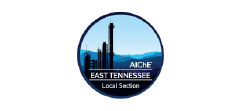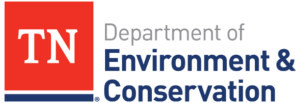TRACK 7 – PROCESS, MECHANICAL, MODELING
Click on seminar title below to read the abstract
Hubert (Hugh) Zey, Product Manager, Phase Separations, Koch-Glitsch
Driven by the needs of an ever-changing industrial marketplace, Koch-Glitsch products and services are designed to deliver performance and reliability in the process industries. Powered by a world class research and development facility, combined with extensive knowledge, experience and unique capabilities, Koch-Glitsch is positioned to deliver optimal solutions to some of the toughest challenges. In this presentation, we will touch on some of the latest product developments by Koch-Glitsch in the fields of mass transfer and mist elimination. We will also talk about new diagnostic services that are key components in our industrial solutions portfolio.
What attendees will learn:
- products applicable to mass transfer and phase separations
- diagnostic services available to troubleshoot and improve operations
- services available for maintenance
Simon Leyland, Head of Consulting and Technology Services, Energy & Chemicals, Siemens Process Systems Engineering
Advanced process modeling is a key means to bring deep process knowledge to digitalization of both design and operations. It provides not only a way to turn the increasing volumes of plant and laboratory data now available into useful information, but also to use that information to generate long-term value in the form of optimized process design, and daily value through better monitored and controlled processes. In this presentation, we describe current thinking on the role of models in creating value through digital design and intelligent digital operations, and the practical steps to creating value rapidly from existing modeling investment.
What attendees will learn:
- Understanding of digital design practice and how this is currently applied to manage technology risk and create long-term value during process design
- Understanding of intelligent digital operations and how high-fidelity models are being applied in operating plants to create daily value
- Understanding of the central role of advanced process modelling in bringing deep process knowledge to digital design and operations
- Recent advances in commercial modeling technology that make both digital design and intelligent digital operations a reality now
- Limitations in models based on data alone and how a hybrid approach combining data with prior scientific & engineering knowledge via physics-based models with predictive capability is essential in many applications
- The importance of simplified ‘surrogate models’ derived from more detailed models and when to use them
Jim Risko, President, TLV CORPORATION
A steam release occurred on a 600 psig high pressure extraction steam line from the cracked gas turbine in a Gulf Coast Ethylene Production Facility. A detailed review of the third-party failure analysis, along with a site visit and field walk down of the equipment determined that the cause of the failure was a condensation-induced water hammer. This is a rapid condensation event, sometimes known as a “rapid steam bubble collapse”. Under certain conditions, a steam pocket can become totally entrapped in subcooled condensate. It is why it is important to keep steam lines drained from pooled condensate through condensate discharge locations (CDL) – those locations which include steam traps and associated piping and valves. When the steam gives up its heat to the adjacent condensate and pipe walls, steam changes from a vapor to a liquid state. As a liquid, the volume formerly occupied by the steam shrinks by a factor of several hundred to over a thousand times depending upon the pressure, and the rapid collapse results in high condensate acceleration to fill the void, generating extremely high force. A review of one such incident will be discussed with attention on the root cause and preventative measures.
What attendees will learn:
How to identify the causes for several ruptures of a through-wall crack on 12″ x 12″ x 10″ tee fed from a 600 psig turbine extraction line, and mitigate recurrence of the event. The crack measured 3″ OD, but 9″ ID.
Jonathan (Jon) Walter, TLV CORPORATION
Steam tracing and other thermal maintenance applications are critical to production, but heated fluids can suffer from low temperatures, non-ideal viscosity, and resultant stagnated flow issues. The cause can often be attributed to design or routing of tracing methods, or that the steam traps used may not provide optimal application performance. This presentation reviews key factors for design or existing installation improvements. Focus is on tube/enhanced tube/channel tracing, or jacketed pipe heating for process fluid transport, such as in sulfur or resid lines, asphalt tanks, sulfur pits/submerged coils/seal legs/tanks, and paraxylene chutes or related manufacturing products.
What attendees will learn:
How to identify the causes for difficulty with maintaining desired heat or temperature for the transport of process fluids.
Nina Zerman, Senior Manager- Chemical and Petrochemical Industry, Dürr Systems Inc.
Emission standards are major policy tools that guide efforts to minimize environmental pollution. We continue to use mandated emissions limits as the benchmark for developing environmental solutions for the chemical/petrochemical industry. Dürr is a single-source supplier, combining specific process knowledge with a diverse portfolio of control technologies and turnkey systems to treat pollutants in gaseous or liquid phase.
Our presentation will focus on the commonly seen emission limits in the chemical industry, the typical chemical processes/applications, and the necessary considerations to achieve compliance. As a general index for meeting emission standards, we will review typical pollutants, technologies, equipment, and various design configurations.
What attendees will learn:
- Emission Limits in the Chemical industry
- Technologies for compliance
- Various technical solutions and configurations
- Typical equipment
- Project Specifications
Paul Hulme, Business Development Manager Filtration, North America, John Crane – Seebach
Computational Fluid Dynamics (CFD) are a well-known method in predicting the performance of equipment in contact with fluids. To simulate a filter, more knowledge needs to be added into the CFD software: The behaviour of the filter medium itself, the influence of layering and the 3 dimensional design of the filtering component (often called mesh pack) itself. If we want to predict the onstream behaviour of a polymer melt filter (a filter system used to filter a polymer in molten state) we also need to incorporate the non-Newtonian behaviour of the fluid itself.
The presentation will give an overview of what is possible and how CFD can be used in root cause analysis of filter failures with very complex fluids.
What attendees will learn:
- Gain an understanding of how John Crane Seebach perform a CFD for non-newtonian fluids
- Gain an understanding of how to improve polymer process filtration through better engineering design
- Learn how to improve fluid throughput and extend process uptime for processes that require filtration of non-newtonian fluids.
- Learn how to re-design and assess such re-design without any impact to production operations.
Alan Shepard, Sales Manager, Paget Equipment Company
Contracting a vendor to fabricate your custom ASME pressure vessels obligates both parties to a process that will ultimately deliver the equipment built correctly and in a timely fashion. Understanding the process needed to be followed by ASME code stamped shops will enhance your ability to smoothly execute a project. This is a particularly acute need with the continuing trend to shorten lead times and assume liquidated damage risk. Learn the processes employed by custom fabricators that meet the rising demands.
What attendees will learn:
- Structuring a quote request that meets your current need
- Understanding a quote to account for any undetermined features
- Requirements to meet lead times for drawing submittals and materials
- The fabrication shop capabilities, organization and workflow
- Where you can find work arounds, and where you cannot.
- The impact on the delivery schedule of inspections and QC requirement
Rui Soares, Sales Manager, EKATO
Optimizing your agitation systems for increased OPEX with less CAPEX and quicker ROI. Safely model and engineer to deliver a solutions that increases yield and safety of older units, reduces raw materials, energy consumption, and maintenance costs. A benefit to your operation and productivity.
What attendees will learn:
- The safety design and engineering concepts That EKATO can offer to optimize the operation of their equipment and process.
- Criteria on revamping older to newer units
- Modeling from Lab to Production and how to achieve results.
- Examples of Revamps and benefits each provides.
- New Technology vs. Old and ROI for upgrading.
Bob Rice, Vice President, Engineering
Control loop performance monitoring (CLPM) solutions proactively identify and isolate underperforming control loops. Whereas solutions generate analytics based on a single, generic state of operation, a new breed of CLPM solutions detail the performance with each of a process’ many and unique states. Using state-based analytics and an innovative measure of PID availability, CLPM can improve process uptime and production throughput.
This presentation distinguishes state-based control loop analytics from traditional monitoring capabilities, and it introduces the Controller Effectiveness (OCE) as a proxy for process availability. Industry case-studies are included.
What attendees will learn:
- Distinguishing different operational states is essential to PID analytics
- Overall controller effectiveness (OCE) serves as a proxy for PID availability
- Higher values correspond with increased process uptime and production throughput
- Production staff that apply state-based analytics see improvements in OCE



